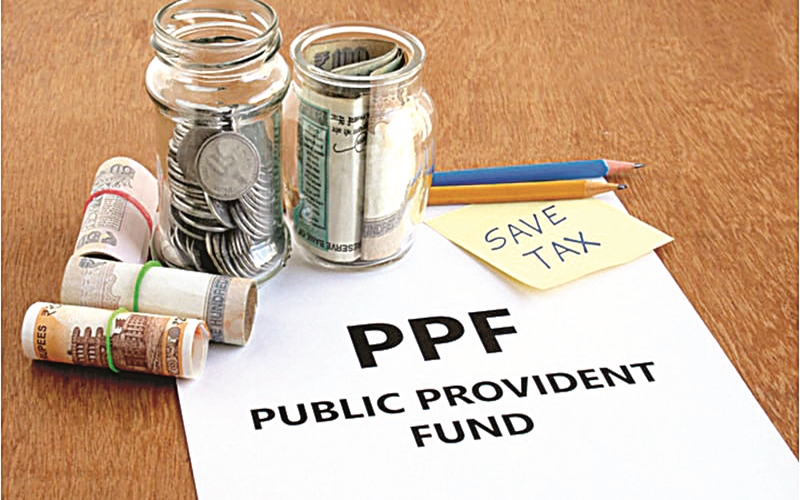
Employee Provident Fund
EPF stands for Employee Provident Fund that is a scheme for providing a monetary benefit to all salaried individuals after their retirement. The process is monitored by the Employee Provident Fund Organisation of India. Any organisation that has more than 20 employees must register with the EPFO.
This scheme is very beneficial for all employees for developing a corpus after their retirement. In this process, an amount is deducted from their monthly salary and is put into the EPF account. The amount collected in the EPF account is provided to the employees after they retire.
What is PF ?
In 1952, the PF (Provident Fund) or EPF scheme was introduced under the Employee’s Provident Fund and Miscellaneous Act. All the rules and regulations are defined by the Employee Provident Fund Organisation. The EPFO’s activities are managed by the Ministry of Labour and Employment.
In this process, the employer will collect an amount by deducting it from your monthly remuneration. As you start working in a firm, both you and the organisation contributes 12% of your basic

remuneration into the EPF account. This salary includes any dearness allowance provided by the company. this amount based on the rules set by the EPFO. The total amount that you receive along with the interest is tax exempted.
12% of the salary goes to the EPF account along with 3.67% from your company. The remaining 8.33% of the 12% is sent to the Employee Pension Scheme. In case your salary is above Rs 6500, the company can only contribute 8.33% of that amount to the EPS. The remaining balance amount is credited to your EPF account.
All individuals earning a salary of Rs 15,000 and above have to register under the EPF scheme.
You can withdraw the entire amount from the account after you retire or leave the organisation. In case of your unfortunate demise, your nominee or legal heir can withdraw this EPF amount.
Employer’s contribution to EPF
The minimum rate is 12% out of a salary of Rs 15,000 that is Rs 1800 per month. So, both the company and you will contribute Rs 1800 to the EPF scheme. Apart from this rate, the employer has to pay an additional amount of 0.5% towards the EDLI (Employees Deposit Linked Insurance Scheme) which is an insurance cover. Through this scheme, your nominee will receive a lump sum amount as death benefit after your demise.
There are administrative costs for EPF and EDLI that have to be borne by the employer. A charge of 1.1% for EDLI and 0.01% for EPF is contributed.
EPF rate of interest
The rate of interest for EPF was 8.55% for 2017-18 and has been increased to 8.65% for the financial year 2019. Even though the contributions are deposited on a monthly basis, the interest on these contributions is calculated yearly as per the rates defined by the government. But, the interest will only be collected for the EPF account balance and not for EPS funds.
The rate of interest is valid between the financial year of 2018 and 2019. When a financial year starts, you will have an opening balance in the EPF account that has been accumulated until that point. For the next financial year, the opening balance will be calculated as:
Opening balance + contributions that have accumulated monthly + interest for the previous opening balance along with the contributions
However, if no amount has been forwarded towards the EPF account for a period of 3 years continuously, the account becomes inactive. Retired employees will not receive interest on the amount collected in an inactive account.
EPF Tax benefits
Your company or employer’s contribution to the EPF account is free from taxes. For your contribution, you can get a deduction of up to Rs 1.5 lakh according to Section 80C of the IT Act.
But, in case you do not wish to be registered under the EPF scheme, you have to opt-out of it at the beginning of your employment. You must notify the company about this by filling out Form 11. In case, you have already registered and have a valid account for EPF, you cannot opt-out.
It is recommended that you do not remove the account for future benefits. It might increase your in-hand salary, but you have to build your future cash reserve in other ways.
CA N. R. Gugale provided’s:
-
- Online Registration for PF code
- Submitting all necessary documents on timely basis.
- Preparing and submitting challans on timely basis.
- Furnishing of particulars of change in ownership / management of the establishment
- Providing day to day consultancy on matters pertaining to EPF, pension scheme & EDLI scheme
- We shall process and submit P.F. Withdrawal forms and follow up for the same (For left employees).
- We undertake Transfer related Submission also (Online transfer)
- Assistance to employees of establishment in claiming Pension
- Assistance to employees in claiming / obtaining superannuation pension.
- Assistance to employees to submit online transfer forms, track claim status
- UAN & Passbook Generation, Guidance in UAN Activation and Seeding of KYC
- Digital Signature Activation and Registration
- Online availability of Monthly Returns, Challans & Correspondence as per your need.
- Regular visit and correspondence with the PF department.
- Maintain cordial relation with concerned PF Officials
- Replying to Show Cause Notices issued under EPF Act
- Assistance at the time of inspections and enquiries conducted by the Inspector.
- Timely updation and proper Guidelines, if any changes in Act or rules.
FAQ’s
How to withdraw PF online?
What is the UAN number?
The Universal Account Number (UAN) is a 12-digit number, allotted by the Employee Provident Fund Organisation to every employee having an EPF account Each new PF account with a new job comes under the aegis of a single unified account, through the UAN.
What are the benefits of investing in VPF?
VPF is a useful investment option for salaried individuals. In addition to the mandatory EPF contribution amounting to 12% of the basic salary, you can choose to contribute a higher amount to increase your EPF investment. This can help grow your retirement corpus. An additional benefit is that you can avail tax benefits at all stages: investment, accumulation and also withdrawal.
I have switched jobs. Should I withdraw my EPF corpus or transfer my fund?
It is recommended to transfer your accumulated EPF funds into a new EPF account opened by the new employer. As a matter of convenience, the UAN stays constant despite the opening of a new EPF account.
Can VPF be withdrawn at any time?
The rules applicable to withdrawals from EPF and VPF are the same. Like EPF, VPF also has a lock-in period of 5 years. However, if you withdraw before completing 5 years, you could be liable to pay taxes. You can withdraw from your VPF account at the time of retirement or resignation. Withdrawals can also be made in case of emergencies such as marriage, medical expenses, home loan repayment or purchase of land or house.
Are both the employee's and employer's contributions to my EPF account tax-exempt?
The employer’s contribution to your EPF is tax-free, and your contribution is tax-deductible under Section 80C of the Income Tax Act. EPF, as an investment, enjoys the status of Exempt, Exempt, Exempt (EEE) in taxation.